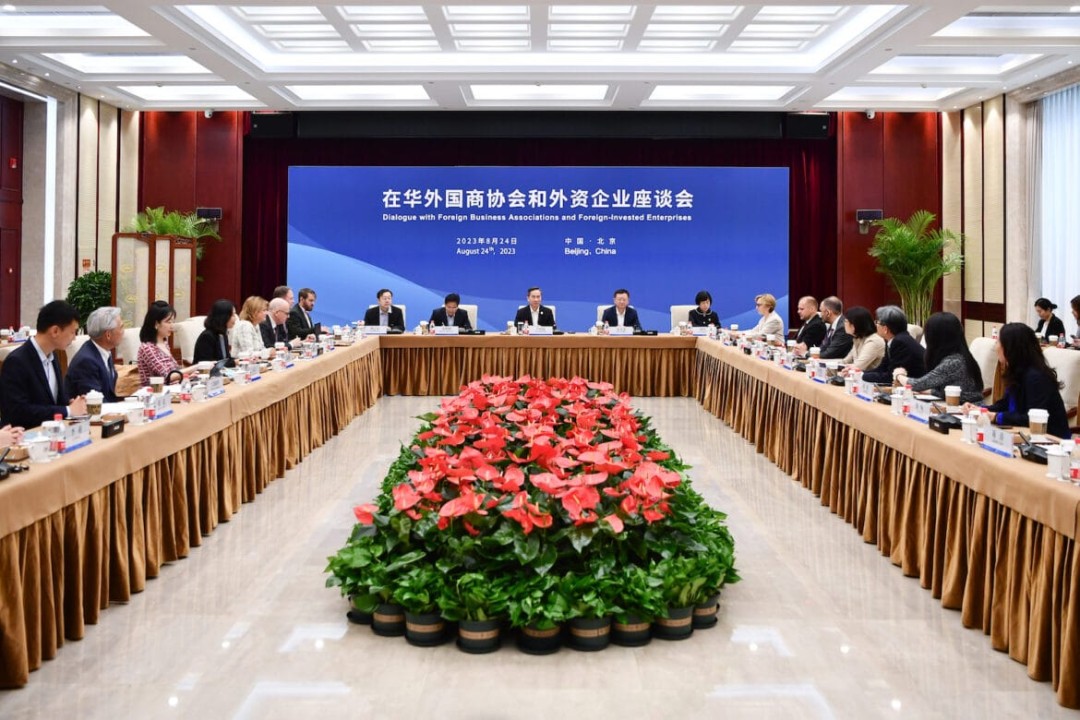China Urges Drugmakers And Hospitals To Replace US Imports

Table of Contents
Geopolitical Factors Driving the Shift
The push for import substitution in the Chinese pharmaceutical industry is largely fueled by escalating US-China relations and concerns over national security and supply chain resilience. The ongoing trade war and increasing geopolitical tensions have highlighted the vulnerabilities of relying heavily on foreign suppliers for essential medicines. China aims to reduce its dependence on US imports to ensure the stability of its healthcare system and bolster its economic independence.
- Increased tariffs and trade restrictions imposed by the US: Trade disputes have led to increased tariffs on pharmaceutical imports, making US-sourced drugs more expensive and less competitive in the Chinese market.
- Concerns about supply chain vulnerabilities and disruptions: Geopolitical instability and potential disruptions to global supply chains have underscored the need for China to secure its domestic pharmaceutical supply. The COVID-19 pandemic further exacerbated these concerns, highlighting the risks associated with relying on a single source for essential medical supplies.
- Strategic goal of achieving greater self-sufficiency in the healthcare sector: Import substitution is a key component of China's broader strategy to achieve greater self-reliance in various sectors, including healthcare. This reflects a national priority to strengthen its national security and reduce its vulnerability to external pressures.
The Role of Domestic Pharmaceutical Companies
The success of China's initiative to replace US imports hinges heavily on the capacity of its domestic pharmaceutical companies. The government is actively investing in the growth and development of these companies through various incentives and initiatives aimed at boosting research and development (R&D), improving manufacturing capabilities, and expanding production capacity.
- Government support for R&D and infrastructure development: Significant government funding is being channeled into R&D to promote innovation and the development of new drugs within China. This includes investments in state-of-the-art facilities and infrastructure to support domestic production.
- Incentives for companies to expand production and develop new drugs: Tax breaks, subsidies, and other financial incentives are being offered to encourage Chinese drug manufacturers to increase production and develop new drugs to compete with US imports.
- Challenges in matching the quality and innovation of US-produced pharmaceuticals: Despite significant progress, Chinese pharmaceutical companies still face challenges in matching the quality, innovation, and technological advancements of their US counterparts. Closing this gap requires sustained investment and focused efforts on improving manufacturing processes and R&D capabilities.
Challenges and Hurdles in Replacing US Imports
While China is making significant strides in its efforts to replace US pharmaceutical imports, several hurdles remain. These include technological gaps, intellectual property rights concerns, ensuring drug quality and safety, and ensuring affordability for the population.
- Difficulty in replicating advanced drug manufacturing technologies: Some advanced pharmaceutical manufacturing technologies are not readily available in China, posing a significant challenge to domestic production. Technology transfer and collaboration with international partners could play a crucial role in overcoming this obstacle.
- Potential concerns about the quality and efficacy of domestically produced drugs: Maintaining high standards of quality control and ensuring the efficacy and safety of domestically produced drugs are critical. Rigorous regulatory oversight and quality assurance measures are essential to build consumer confidence.
- Challenges in ensuring affordable access to essential medicines for the population: Ensuring that domestically produced drugs are affordable and accessible to the entire population is paramount. Balancing the need for self-reliance with the need to provide affordable healthcare requires careful policy-making and strategic planning.
The Impact on Hospitals and Healthcare Providers
The shift towards domestically produced pharmaceuticals will significantly impact hospitals and healthcare providers. Hospitals will need to adapt their procurement strategies, potentially requiring training on the use of new drugs and ensuring seamless transitions to minimize disruption to patient care.
- Training healthcare professionals on the use of new domestically produced drugs: Hospitals need to invest in training their staff on the proper use and administration of domestically produced drugs, ensuring that healthcare professionals are equipped to handle any potential differences in dosage or administration compared to previously used US imports.
- Ensuring adequate supplies of essential medicines: Maintaining a consistent and reliable supply of essential medicines is crucial. The transition to domestic sources requires robust logistics and distribution networks to ensure uninterrupted access to necessary medications.
- Potential impact on clinical trials and research collaborations: The shift may impact clinical trials and research collaborations, potentially affecting the speed of drug development and access to cutting-edge treatments.
Conclusion
China's push to replace US pharmaceutical imports is a multifaceted initiative driven by geopolitical considerations and a strategic focus on national security and self-reliance. While the move presents significant opportunities for the growth of the domestic pharmaceutical industry, it also poses challenges related to technological advancements, quality control, and affordability. The successful implementation of this initiative will require sustained investment in R&D, robust regulatory frameworks, and collaborative efforts between the government, pharmaceutical companies, and healthcare providers. China's efforts to replace US imports represent a significant transformation within the global pharmaceutical market. Further investigation into the long-term effects of this initiative is crucial to understand the evolving landscape of healthcare and the implications for both domestic and international players. Stay informed about the ongoing developments concerning China's efforts to reduce its reliance on US pharmaceutical imports.

Featured Posts
-
 Du An 500k V Mach 3 Kho Khan Va Thanh Cong Cua Cong Nhan Dien Luc Mien Nam
May 01, 2025
Du An 500k V Mach 3 Kho Khan Va Thanh Cong Cua Cong Nhan Dien Luc Mien Nam
May 01, 2025 -
 La Flaminia Scala La Classifica Un Passo Avanti Decisivo
May 01, 2025
La Flaminia Scala La Classifica Un Passo Avanti Decisivo
May 01, 2025 -
 Open Ai Challenges Google Chat Gpt Powered Shopping Experiences Arrive
May 01, 2025
Open Ai Challenges Google Chat Gpt Powered Shopping Experiences Arrive
May 01, 2025 -
 Xrp Price Prediction After Ripples 50 Million Sec Settlement
May 01, 2025
Xrp Price Prediction After Ripples 50 Million Sec Settlement
May 01, 2025 -
 Navigating The Dragons Den Tips For Success
May 01, 2025
Navigating The Dragons Den Tips For Success
May 01, 2025
